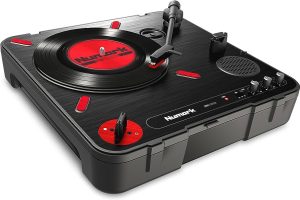Contents
Catfish stations are also called catfish setups, or fishing spots. They are locations and arrangements that have been designed to catch and attract catfish. The setups range from simple fishing spots on the bank to complex setups that involve multiple rods and baiting techniques.
This comprehensive guide will explore the basics of setting up an effective catfish station. We’ll also discuss the different types of catfish that you can target and the best baiting techniques.
Understanding Catfish Behavior
It’s important to know the habits and behavior of catfish before setting up your catfish station. Catfish are bottom dwellers that are known for their scavenging behavior. The best time to fish is at night or in the morning when they are most active. The catfish has a keen sense of taste and smell, which allows them to detect the bait at a distance. Catfish are found in rivers and lakes with muddy or sandy bottoms.
Catfish Types
Catfish comes in many different types, each with its own characteristics and habitat preferences. There are several types of catfish.
- Catfish: Channel catfish, with their forked tails and wide distribution, are one of the most common species. They are found in large lakes, rivers and reservoirs.
- Blue Catfish These are some of the largest catfish species and are known for their grayish-blue coloration. The blue catfish is found in large reservoirs and rivers. It can reach impressive sizes and weights, sometimes exceeding 100 pounds.
- Flathead Catfish Flathead Catfish are characterized by their wide, flat heads and prefer deep pools or rivers that move slowly. Due to their elusiveness, they are solitary hunters and difficult to catch.
- Bullhead Catfish : Bullhead catfish is smaller than its counterparts and can be found in ponds or lakes. They are also common in slow-moving river systems. Beginner anglers target them because they are more tolerant to poor water conditions.
Selecting the Right Location
The location of your catfish station will determine its success. Consider the following factors:
- Depth of Water Catfish prefer deeper water during the day, and shallower waters at night. To increase your odds of success, look for areas with different depths.
- Structures and Cover Catfish are attracted to structures like submerged logs and rocks. They provide cover for the catfish and attract smaller fish that serve as their prey.
- Current and flow: Focus on areas in rivers with slow to moderate currents. These areas are used by catfish to conserve their energy as they wait for food.
- Temperature : Catfish tend to be more active in waters that are warmer, between 70-85degF. (21-29degC). During the colder months they will move deeper and warmer waters.
- Food sources: Search for areas with abundant natural food such as small fish, insects and crustaceans. Catfish are opportunistic eaters, and will gravitate to areas where there is abundant food.
Set up your Catfish Station
It’s now time to set-up your catfish station. This step-by-step tutorial will help you get going:
- Equipment and Gear Ensure that you have the correct fishing equipment, such as sturdy rods and reels and heavy-duty line. Equipment that can handle the strength of catfish is important.
- Bait selection: Select baits that appeal to the catfish’s senses of taste and smell. Popular baits include
- Livebait: Minnows, nightcrawlers and shads are all excellent baits for catfish.
- Cutbait: Fish pieces, like herring or shad release strong smells that attract cats.
- Stink Bait : Stink baits available commercially are designed to emit powerful odors which catfish find irresistible.
- Chicken Liver : The classic catfish lure, chicken liver is inexpensive and highly effective.
- Rigging techniques: Use the appropriate rigs for presenting your bait. Catfish rigs are:
- Slip Sinker rig This rig allows catfish to feel the weight of the hook without feeling it. It increases the chance of a successful hookset.
- Three Way Rig : The three-way rig is ideal for fishing against currents. It keeps the bait on the surface and in the strike zone.
- Float Rig. Using a floating device, the bait is kept at the desired depth and visible to the catfish.
- Chumming : Chumming is the act of dispersing bait into water to lure catfish. Create a scent trail by mixing ground bait with fish parts and other attractants.
- Rod Placement : Place multiple rods in different distances and depths to cover more area. Rod holders will keep your rods in place and stop them being pulled into water by strong catfish.
Baiting Techniques & Strategies
You can increase your catfish catching chances by using effective baiting techniques. Here are some things to think about:
- Match The Hatch Use bait that mimics natural food sources in the area. It increases the chances of catfish being drawn to your bait.
- Scent: The catfish is highly dependent on its sense of taste and smell. Add scents and flavors to your bait, like garlic, anise or blood, in order to make it more attractive.
- Freshness is Important: A fresh bait will be more effective than an old or spoiled one. To keep your catfish bait attractive, replace it regularly.
- Presentation Present your bait in a natural way to attract catfish. Avoid overly complex rigs or too much weight that could make your bait look unnatural.
- Timing Catfish are most active at certain times during the day or night. Catfish fishing is best done in the early morning, evening and at night.
Catfishing techniques advanced
Here are some advanced catfishing techniques for experienced anglers.
- Jug fishing: This is done with floating bottles or jugs that have baited lines attached. You can cover a wide area with jug fishing, which is especially effective in reservoirs and lakes.
- Trotlining A trotline, or long line with baited swivel hooks along its length. The line is left unattended and anchored at the ends to capture catfish.
- Noodling : Also called hand fishing, this technique involves catching catfish with your hands, usually in shallow water. This technique is a combination of caution and experience as it requires reaching down into the underwater holes to find catfish.
- Driftfishing: When drift fishing, you allow your bait to drift with the current. This technique works well in rivers and other large bodies of water, where catfish are active feeders.
Safety Tips for Catfishing
It’s important that you prioritize safety when catfishing. Here are a few safety tips you should keep in mind.
- Personal flotation devices: Wear a life jacket at all times, but especially when you are fishing in a boat.
- Weather awareness: Before heading out, check the weather forecast and avoid fishing in severe weather conditions.
- Night fishing precautions: Use proper lighting when you are fishing at night and tell someone your location and return time.
- How to Handle Catfish Catfish can be injured by the sharp spines found on their fins. Use pliers to remove the hooks.
- First-Aid Kit: Always keep a first-aid kit handy for minor injuries or emergencies.
Conservation and Ethical Fishing
It’s vital that anglers practice conservation and ethical fishing in order to maintain the catfish population. Here are a few guidelines to follow.
- Catch-and-Release: Use catch-and release to conserve breeding populations. Circle hooks can reduce fish injury.
- Adhere To Regulations: Follow local fishing regulations including bag and size limits. These regulations were put in place to maintain a healthy eco-system and protect fish populations.
- Proper disposal: Properly dispose of fishing line and hooks as well as bait containers to avoid littering or harming wildlife.
- Respect Environment: Clean up after yourself. As little as possible, damage vegetation and disturb the natural habitat.
The conclusion
Knowledge, patience and dedication are required to set up and maintain a successful catfishing station. Understanding catfish behavior and selecting the best location to fish, as well as using effective baiting methods and prioritizing safety, conservation and environmental protection, will enhance your catfishing experiences and increase your odds of success. This guide is for both beginners and experienced fisherman. It will give you the tools and tips to create a successful and fun catfish station.
The key to catfishing success is constant learning and adaption. Try out different locations, techniques, and baits to find what works for you. Happy catfishing.










